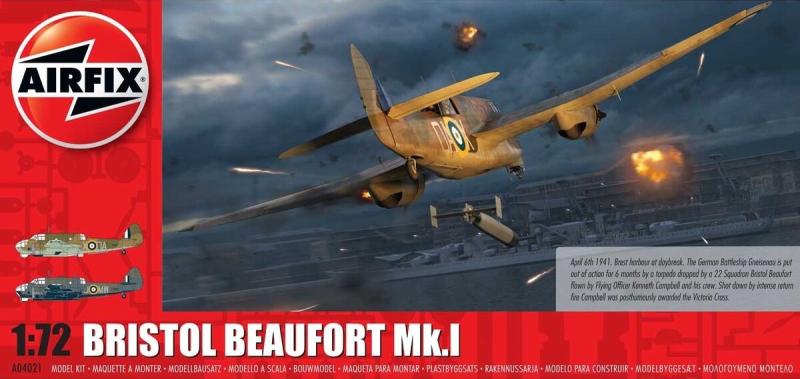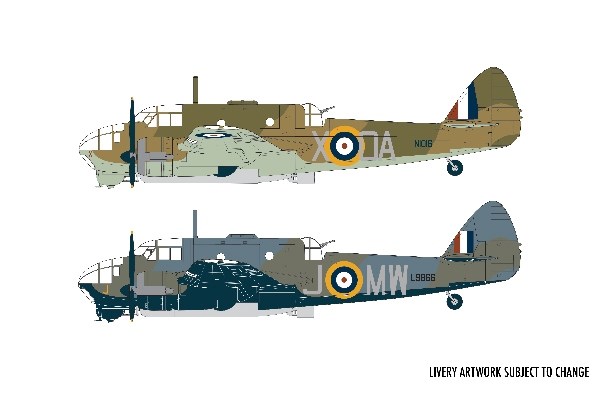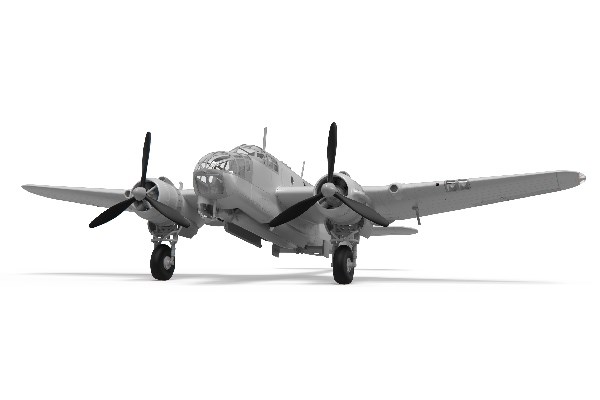Bristol Beaufort Mk.1 1/72
Lägg till en bevakning så meddelar vi dig så snart varan är i lager igen.
Bristol Beaufort Mk.1 1/72

The second in a successful trio of twin engined aircraft designed by the Bristol Aeroplane Company during the 1930s, the Beaufort is significant as the only monoplane produced for the Royal Air Force designed from the outset as a torpedo bomber and reconnaissance platform. Developed from the Blenheim light bomber, the Beaufort was ordered ‘off the drawing board’ by the Air Ministry, a move which showed great faith in the Bristol Company, whilst at the same time illustrating the RAF’s urgent need for an effective torpedo bomber.
Although initially intended as an evolutionary adaptation of the existing Blenheim bomber, it quickly became apparent that the new aircraft would look significantly different from its predecessor, with a much deeper front fuselage section housing a crew of four and the ability to carry a torpedo in a semi-recessed configuration. These modifications resulted in a gross weight increase of around 25% over that of the Blenheim and would require the installation of more powerful engines, if the new aircraft was not to suffer a significant performance reduction – indeed, the new engines for the aircraft, combined with the existing production commitments for the Blenheim would cause lengthy delays during the Beaufort’s development. With the initial contract placed in August 1936, despite the pressing need for the new aircraft, it would be more than two years before the prototype Beaufort took to the air. Entering Royal Air Force service with No.22 Squadron Coastal Command in January 1940, the Beaufort proved to be a rugged and highly manoeuvrable aircraft, although the engines continued to be something of a problem.
Initially employed laying mines in enemy waters, Beauforts would later mount attacks against the German battleships Scharnhorst and Gneisenau and the heavy cruiser Prinz Eugen, however, in the European theatre, the aircraft would operate in the main as a medium bomber. In the Mediterranean, Beauforts operating from Egypt and Malta would take a terrible toll of Axis shipping and during a concerted onslaught from the middle of 1942, would make a significant contribution in denying Rommel’s Afrika Korps the vital supplies they needed to continue fighting the desert war. Due to the weight of the aircraft, a steep diving approach was not suitable for the Beaufort and a torpedo attack run needed to commence at a relatively low, flat attitude and quite some way from the target, if the torpedo release was to be successful and not hit the water ineffectively at a steep angle. This made the aircraft vulnerable to accurate defensive fire, however, Beaufort pilots were brave and aggressive in their flying, using the excellent manoeuvrability of the aircraft to make the enemy gunners job much more difficult. Further afield,
Beauforts of the Royal Australian Air Force would also prove extremely effective in the South-West Pacific, taking a heavy toll of Japanese shipping and posting an impressive operational record in the process. Also employed in bombing, reconnaissance, convoy protection and troop resupply duties, the 700 Beauforts produced in Australia were regarded as some of the most reliable Allied aircraft to operate in these often demanding environments and were well-liked by both air and ground crews. Eventually equipping 19 RAAF Squadrons, the Beaufort was described as being perhaps the most important Allied aircraft in defeating Japanese forces in the South West Pacific region, which is some accolade for an aircraft whose contribution has largely been overlooked in the years since the end of WWII.





